Most travelers start with Thailand, and for a first-timer, it’s a solid choice: white-sand beaches, buzzing tuk-tuks, kind people, and some of the best food on the planet.
I first visited Southeast Asia in 2008, during my first big solo trip that lasted three months. Since then, I’ve spent about a year exploring this part of the world.
In this post, I’m sharing ten places that made a lasting impression on me—and maybe they’ll speak to you, too. Of course, favorites are personal; what resonates with one traveler might not with another. It all comes down to your interests and the kind of experience you’re after. To make it easier to compare, I’ve added quick pros and cons to each destination.
Chiang Mai – One of the Most Memorable Southeast Asia Places to Go for Culture & Nature
The first time I arrived in Chiang Mai, I immediately felt a different rhythm—slower, calmer, and wrapped in mountain air. Unlike the bustling beaches in southern Thailand, this city in the north offers a refreshing break from the usual tourist hotspots.
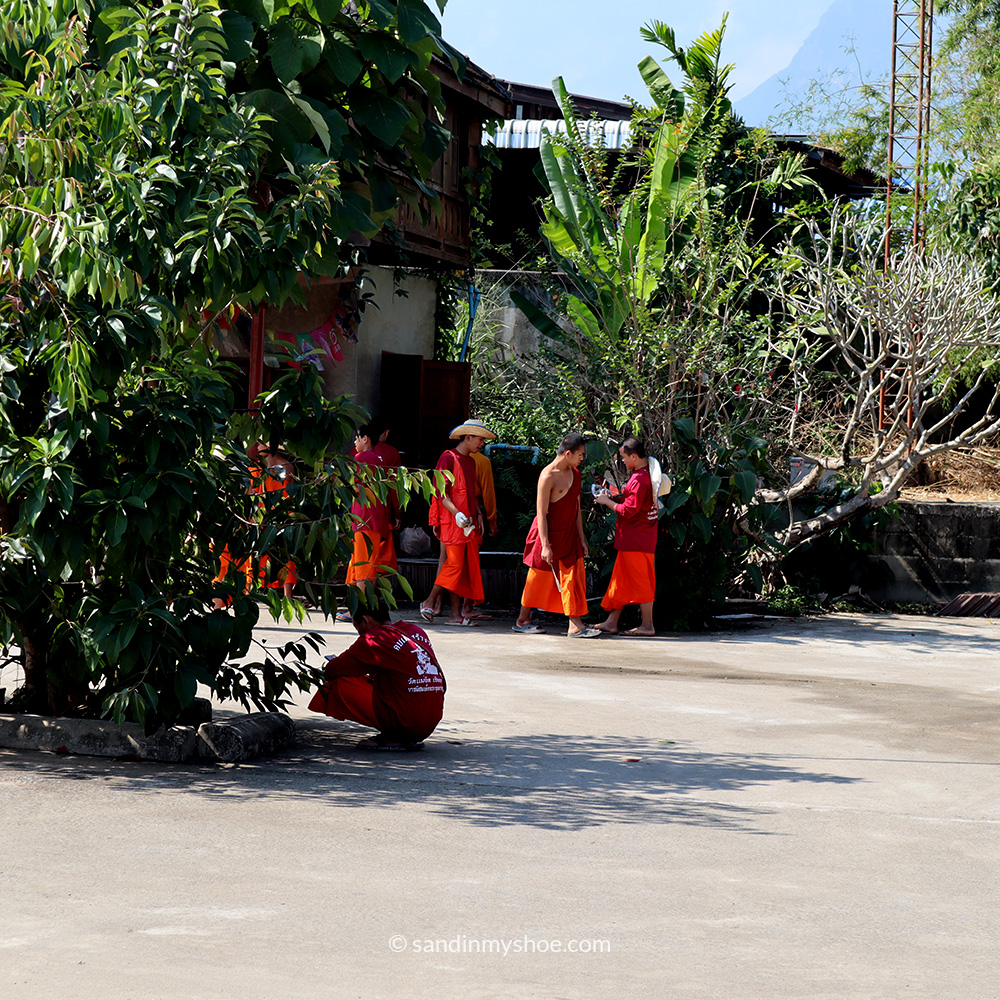
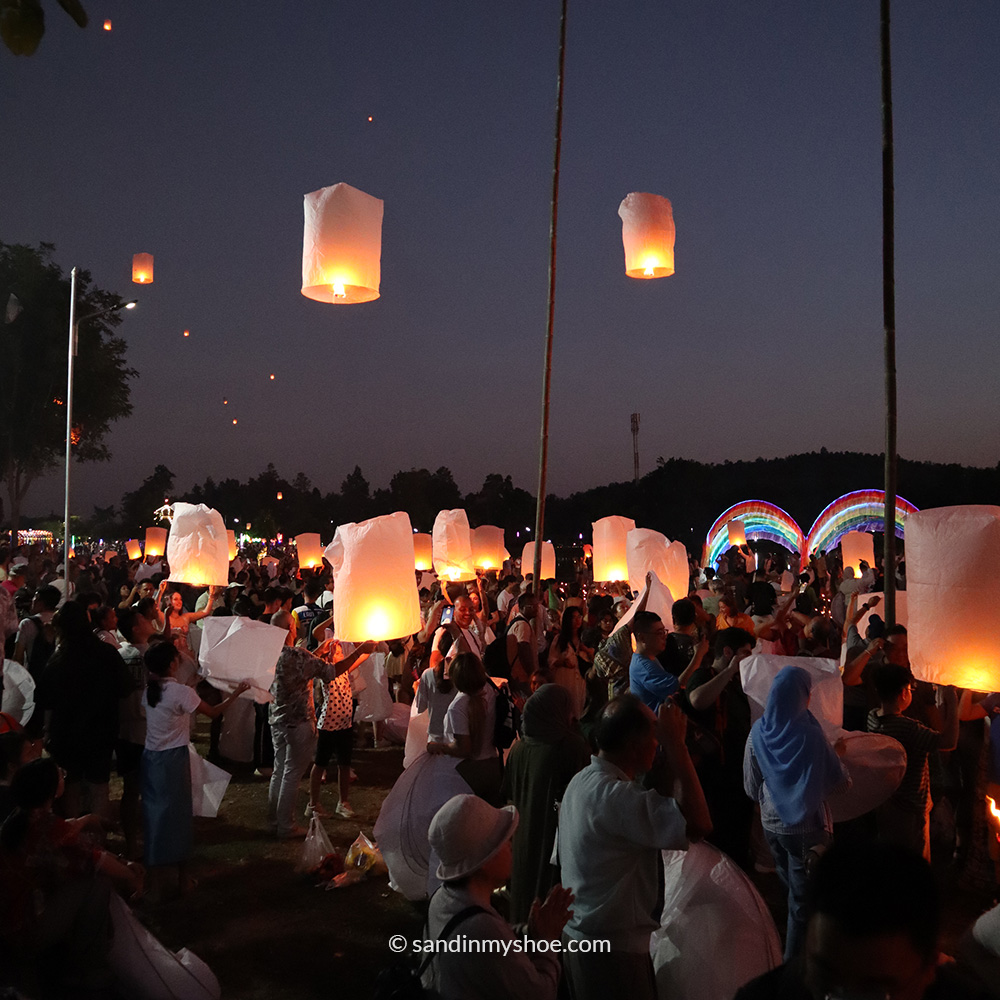
Known as Thailand’s cultural capital, Chiang Mai sits nestled among mountains and ancient temples, with a rich history rooted in the Lanna Kingdom. I spent nearly three months here working remotely, and the laid-back vibe made balancing work and exploration easy.
If you love adventure, don’t miss the Mae Hong Son Loop—a scenic motorbike route that winds through misty hills and quaint villages. For wellness seekers, there are saunas, cold baths, and even an alpaca farm nearby. Plus, the digital nomad community here is vibrant but never overwhelming.
Things to know before you go:
- Avoid the burning season (roughly March to May), when the air quality can be poor.
- Chiang Mai is very affordable, with lots of budget-friendly food and accommodation options.
- The city is walkable but renting a motorbike is a popular way to explore.
- Don’t miss trying the local Northern Thai cuisine—it’s delicious and distinct!
Whether you’re here to work, explore, or simply soak in the culture, Chiang Mai offers a perfect blend of old-world charm and modern comforts.
Pros: Laid-back yet vibrant atmosphere with a strong cultural identity, affordable food and accommodation, and easy access to nature with mountains and waterfalls just outside the city. The café scene is thriving, making it a favorite among digital nomads, and it’s well connected by sleeper trains and domestic flights.
Cons: Air quality drops significantly during burning season (February to April), there’s no beach nearby, and parts of the Old City can feel overly touristy during peak season.
Quy Nhon – A Hidden Gem Among Southeast Asia Places to Go for Quiet Beaches
Quy Nhon is a favorite holiday spot for local Vietnamese, making it a great choice if you’re looking for somewhere less touristy with a decent beach. It feels more genuine than places like Da Nang, which is becoming crowded with Russian and Korean tourists.
The vibe here is relaxed and local—perfect if you want that holiday feeling without the throngs of foreigners. When I visited during the off-season, I rented a 45-square-meter apartment with a sea view for less than $15 a day.
Keep in mind, Quy Nhon isn’t really set up for foreign tourists. It’s mainly a local getaway, so if you’re after an authentic experience, this is the place to check out.
Plus, if you’re traveling Vietnam by train, it’s an easy stop along the way.
Pros: Relaxed, authentic vibe with beautiful beaches, affordable accommodations, and easy train access.
Cons: Limited tourist infrastructure, few services for foreigners, and English isn’t widely spoken.
The Mighty Mekong Delta – Rural Life and River Adventures
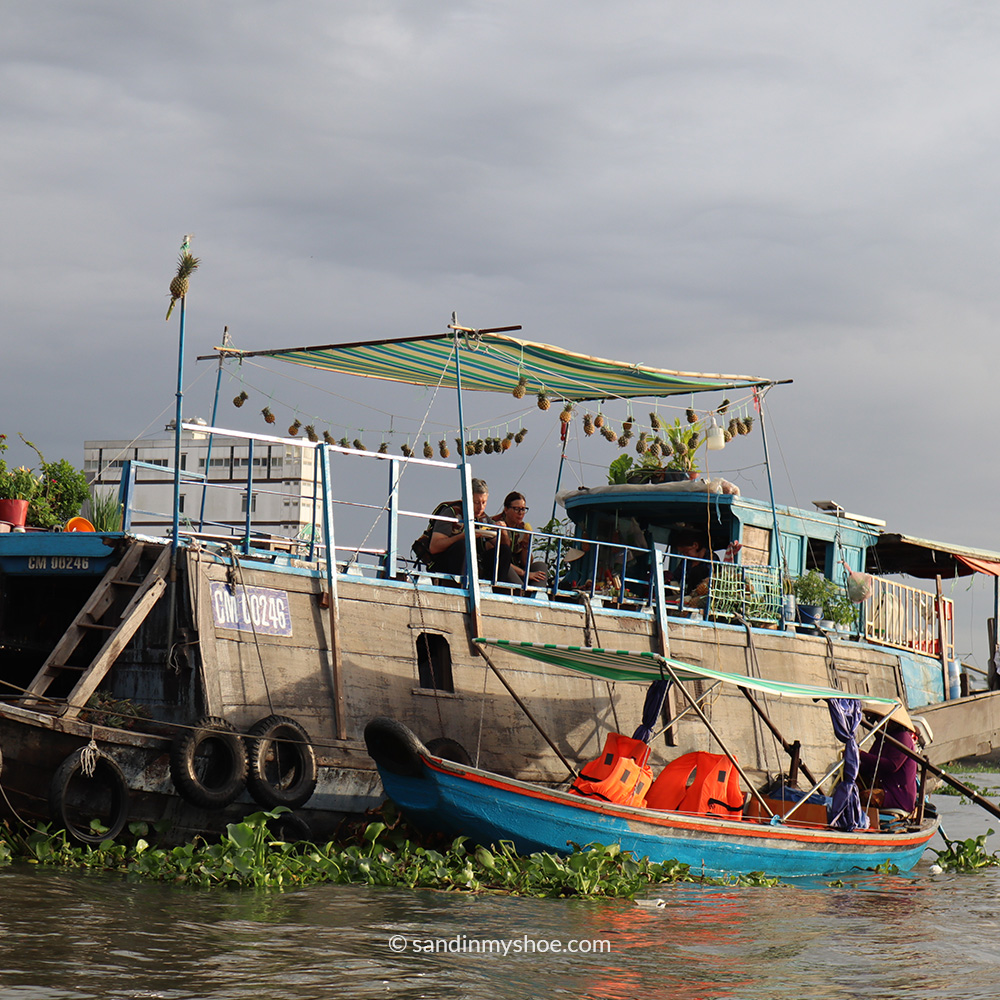
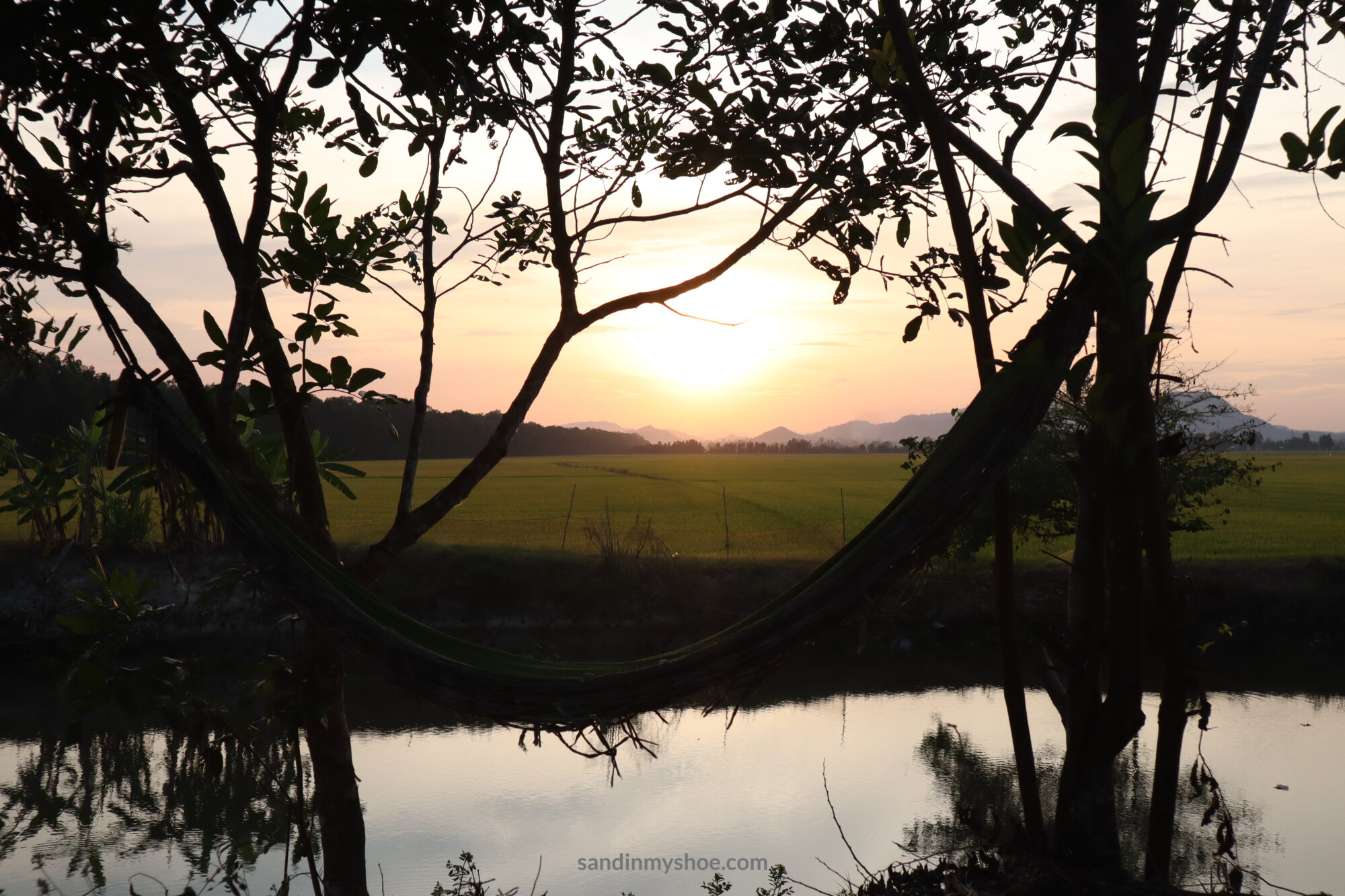
The Mekong Delta feels like a swampy labyrinth, where thick roots, vines, and reeds make it seem like the jungle is swallowing the river whole. In other parts, you’ll find vast countryside dotted with endless rice fields.
One of the highlights used to be the Cai Rang floating market, where locals traded fresh produce straight from their boats. While the market itself has moved to land, the lively atmosphere and vibrant trade continue nearby, offering a glimpse into local life.
You can explore quiet villages where traditional crafts like coconut candy making and mat weaving are still practiced.
Chau Doc, a town in the region, is home to the Ba Chua Xu Temple—one of the oldest and most important temples in the delta and a popular cultural stop.
Unlike busier cities, the Mekong Delta isn’t a hotspot for hyper-tourism, making it perfect for an authentic and peaceful experience.
Travel here is easiest during the dry season when the waterways are more navigable. Many visitors choose boat tours to explore the winding canals, but cycling or riding a motorbike through the lush rice paddies is another great way to soak in the landscape and daily life of the river communities.
The Mekong River is the lifeblood of the region, shaping both the economy and culture. You might even catch local festivals or celebrations tied to the river’s rhythms.
Pros: A peaceful, rural escape with floating markets, lush rice paddies, and authentic village life. It offers a glimpse into traditional Vietnamese culture and daily life on the water, with affordable boat tours and homestays that feel immersive rather than packaged.
Cons: Infrastructure can be basic outside the main towns, with fewer services for foreign travelers. English isn’t widely spoken, and travel between sights can be slow due to the region’s sprawling.
George Town, Penang
Best for history and culture
George Town ranks among the best Southeast Asia places to go for food and heritage. It’s a multicultural city that might make you wonder if you accidentally landed in China or India. Despite its diverse influences, the city feels surprisingly laid-back. Locals aren’t pushy—perhaps because tourism isn’t Malaysia’s main export here—so you won’t experience aggressive selling like in some other destinations.
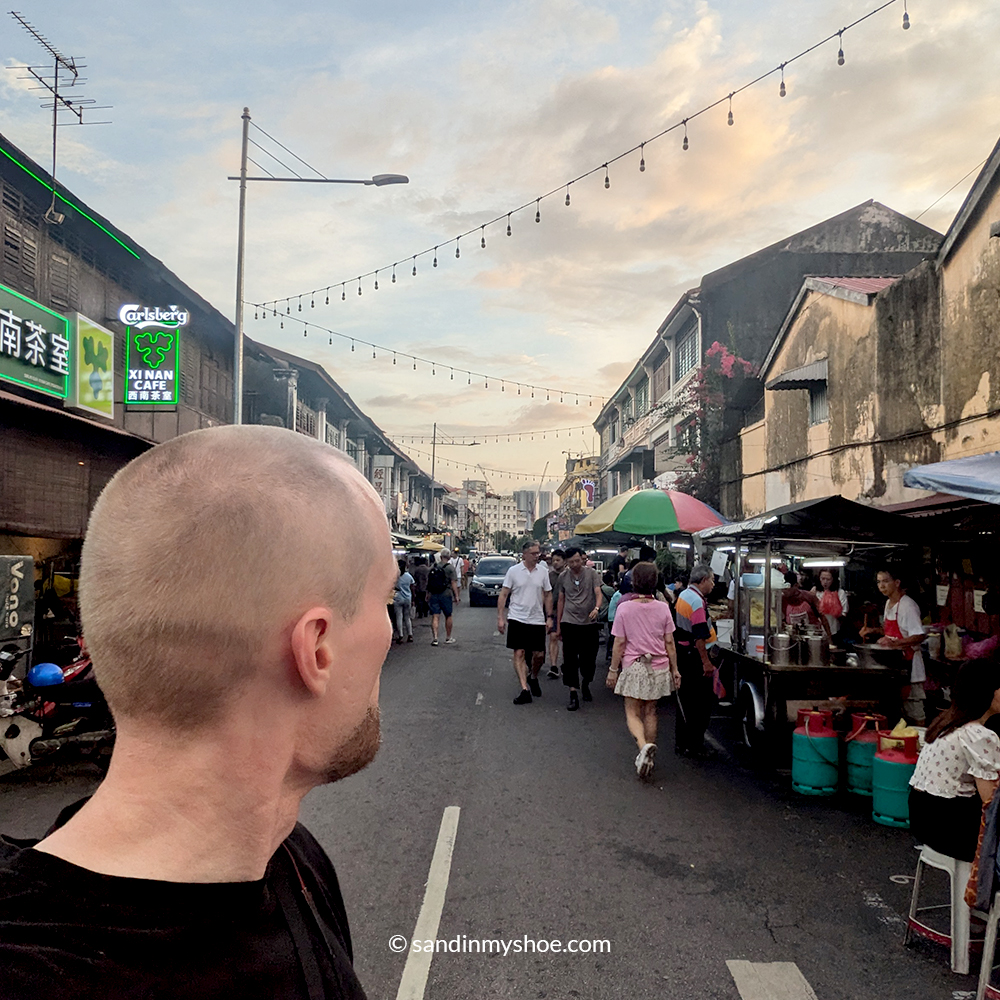
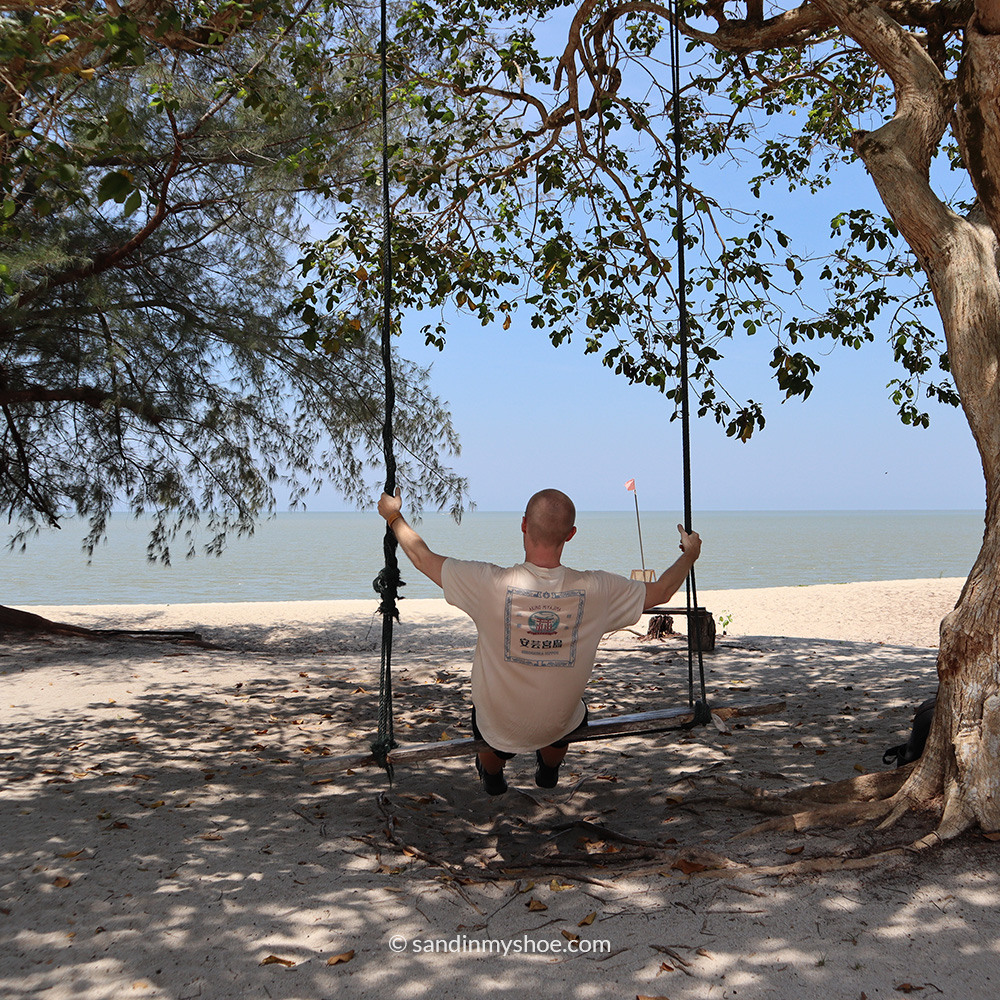
One of the best things about George Town’s multicultural mix is the incredible variety of food. You could enjoy authentic Indian dishes one day, savor mouthwatering Chinese specialties the next, and dive into delicious Malaysian cuisine after that. The best way to experience this is by exploring the vibrant street food markets scattered throughout the city.
But George Town isn’t just about food. There’s a national park perfect for hiking, several beaches ideal for relaxing and sunbathing, Penang Hill where you can meet some adorable monkeys and enjoy stunning city views, and the beautiful Kek Lok Si Temple for a dose of culture.
Check out my post on the best things to do in George Town, Penang if you want to learn more.
Pros: A colorful mix of cultures, cuisines, and architecture, George Town blends colonial charm with street art, hawker stalls, and heritage shophouses. It’s walkable, foodie-friendly, and buzzing with creative energy. The city is also a UNESCO World Heritage Site with excellent value for money.
Cons: It can get hot and humid year-round, traffic is chaotic in certain areas, and some parts of the old town can feel a little over-commercialized, especially during peak travel periods.
Perhentian Islands
For marine life enthusiasts, the Perhentian Islands are a key Southeast Asia places to go. If you’re chasing tropical bliss, these islands deliver. Located off the northeast coast of Malaysia, they offer that castaway feeling without the hassle. You can snorkel straight from the beach at Coral Garden, where bright coral fans sway with the current, sea turtles drift by like gentle ghosts, and baby blacktip reef sharks cruise the shallows as if they own the place.
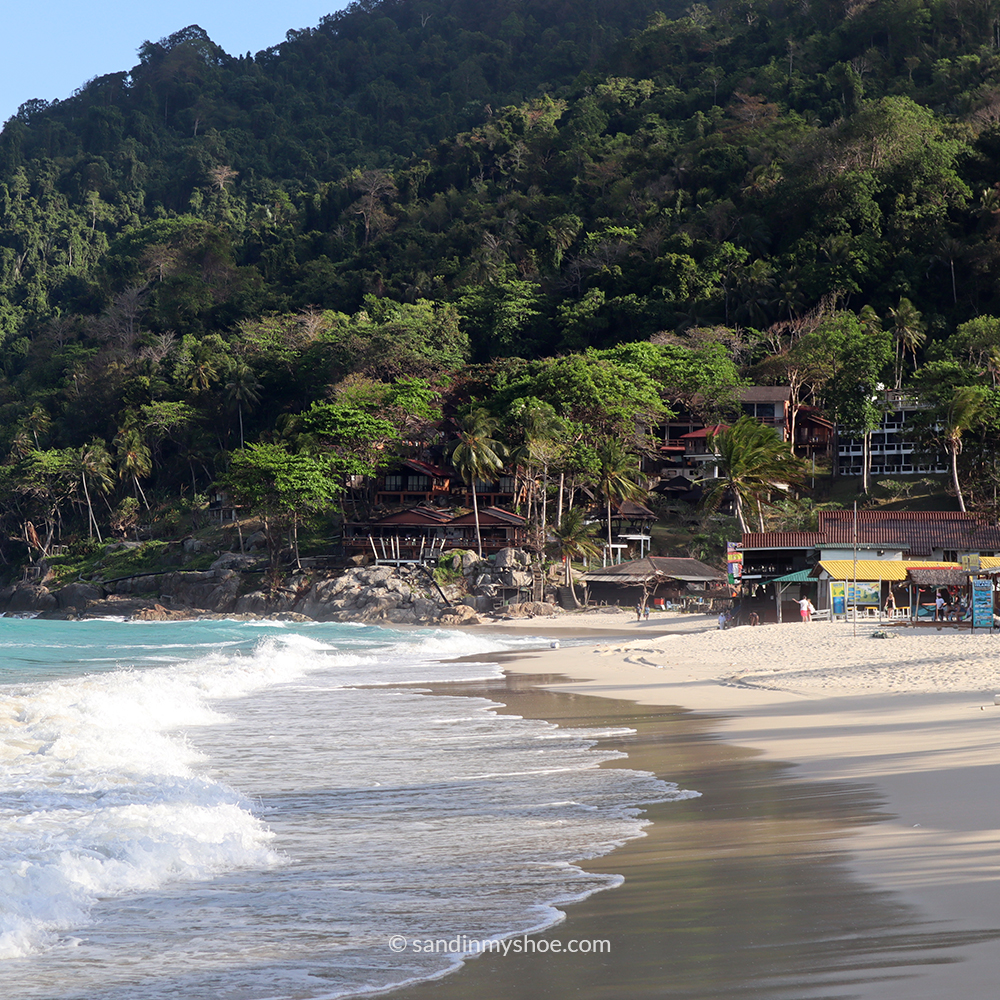
But what really stuck with me wasn’t underwater. It was a moment deep in the jungle.
One afternoon, I decided to walk between the island’s beaches via a forest trail. On my way back, I veered off on a small hike, just to explore a little more. That’s when I came face-to-face with a monitor lizard—a giant. Easily over a meter long. It stood in the middle of the path, completely still. So did I.
We locked eyes in silence. I took a cautious step forward, thinking I might edge past it, but its stare intensified—cold, ancient, unflinching. I backed off. A few seconds later, it slowly moved on, disappearing into the green with the same quiet authority it arrived with.
They’re not usually aggressive, but their bite can be dangerous—full of bacteria, and medical help is limited on the island. It was one of those rare travel moments that snaps you out of postcard mode and reminds you: you’re in their world now.
And that’s the thing about the Perhentians. It’s not just the beaches that make an impression—it’s how the wild quietly watches you back.
Islands around Semporna
If you’re into world-class diving and chilled-out island life, the islands around Semporna in Sabah, Borneo, Malaysia, are worth the trip. The water is insanely clear, the coral reefs are full of life, and the whole area still feels kind of off the radar—at least compared to Thailand or Bali.
Sipadan is the star here. It’s one of the best dive spots in the world, and it really lives up to the hype. But it’s also expensive, and you need a permit to go. If that’s not in your budget, Mabul and Kapalai offer great diving and snorkeling too, with turtles, amazing coral gardens, and all sorts of weird critters.
One of the most unique parts of this area is the Bajau Laut, also known as sea gypsies. They live in stilt houses built over the sea on remote islands, and their whole life is tied to the ocean. Visiting them isn’t super easy—you need to rent a boat and captain, and it’s good to talk to locals or a guide first to make sure it’s safe and respectful. Their locations can shift, especially with recent resettlement efforts. The Bajau Laut don’t have official citizenship, and many don’t have access to schools or healthcare, though some NGOs are starting to help.
Seeing their way of life firsthand was something I’ll never forget. Kids paddling around in handmade canoes, fishing families hanging out above turquoise water—it felt both peaceful and incredibly raw.
Just a heads-up: this area isn’t the easiest to travel around. Dive trips can be pricey, and the islands can get crowded in high season. But if you’re after incredible marine life, adventure, and a chance to experience a different side of Borneo, it’s 100% worth it.
Check out my post about visiting the Bajau Laut people.
Pros: Amazing diving, unique sea gypsy culture, crazy clear water.
Cons: Can be expensive (especially with Sipadan), a bit tricky to organize a visit to the Bajau Laut people.
Moalboal
Swimming alongside thousands of sardines just a few breaststrokes from shore was absolutely mesmerizing. At first, they darted away whenever I swam toward them—fast and synchronized, like a single organism. But then, suddenly, I was surrounded. A wall of sardines in every direction I looked, shimmering and shifting around me. I was blown away by how many fish filled the water—and how easy it was to get so close. Spotting turtles nearby made the experience even more unforgettable.
Another highlight was Kawasan Canyoneering—a thrilling adventure of cliff jumps up to 10 meters high, natural rock slides, and stunning jungle scenery carved by the river over centuries.
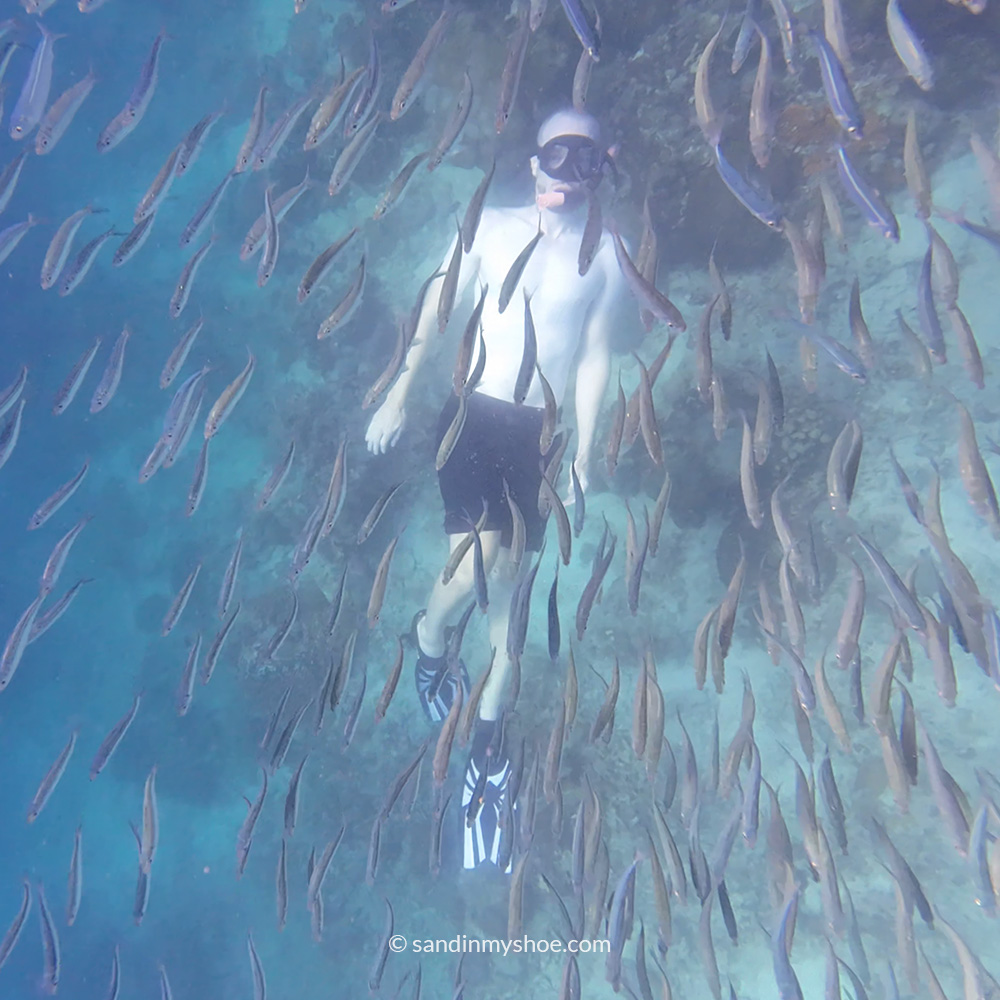
Beyond the water, I rented a motorbike and explored the surrounding mountains. I stopped whenever something caught my eye—whether it was a sweeping view or a chat with a friendly local. It made the ride feel like a real adventure. At one point, my back tire gave out in the middle of nowhere—but in true travel luck, I rolled to a stop right next to a bike shop. They fixed it in under 45 minutes for just $3.
Moalboal’s mix of vibrant marine life, adrenaline-pumping activities, and warm, welcoming people made it one of my favorite places in the Philippines.
Pros: Sardine run right off the beach, turtle sightings, epic canyoneering, scenic mountain roads, friendly locals.
Cons: Can get very crowded during high season.
Port Barton
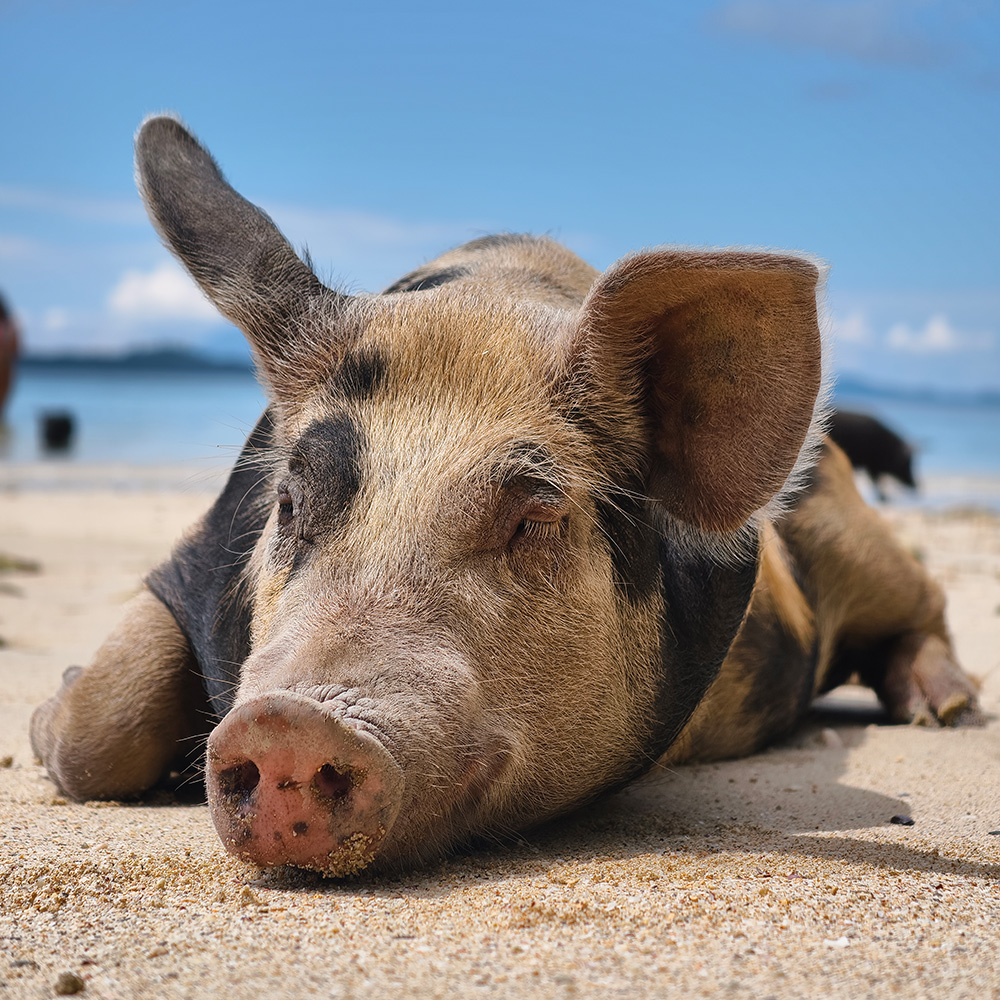
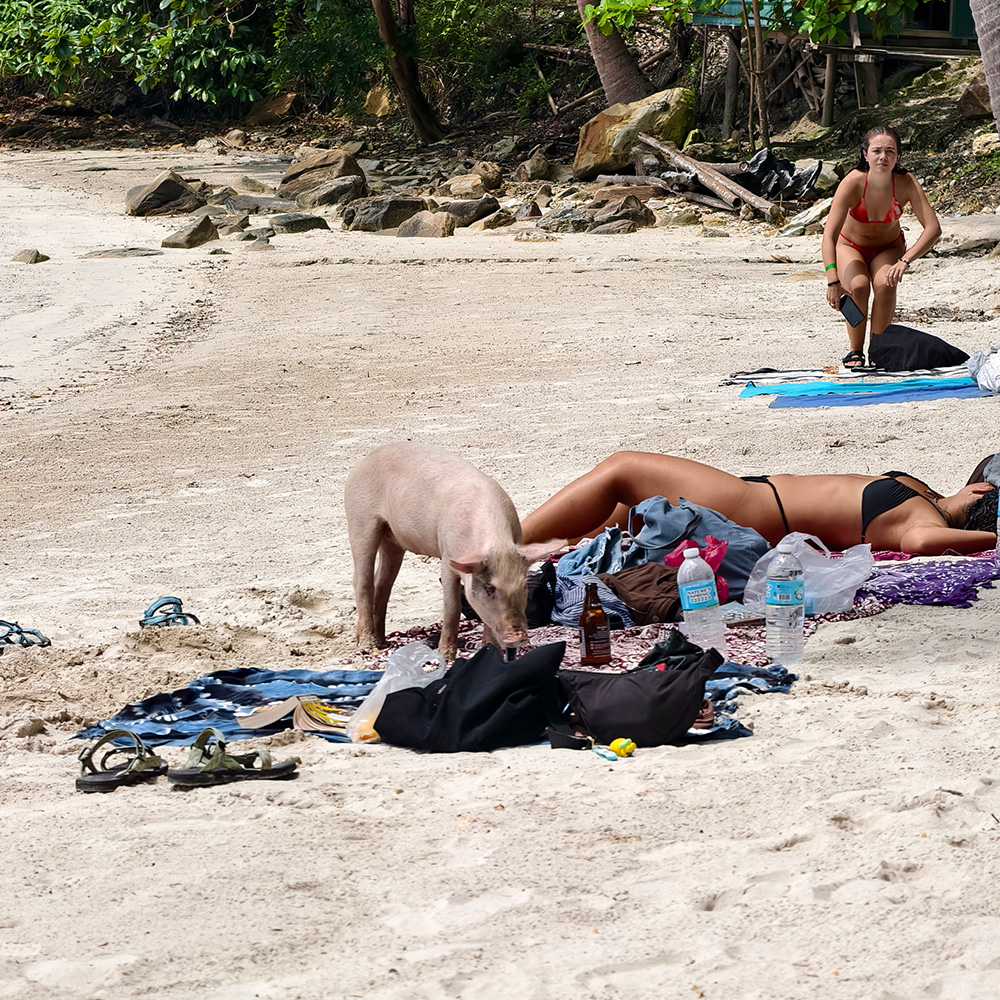
Port Barton is a small village on Palawan island, tucked between Puerto Princesa and El Nido in the Phillipines. During high season, the population can easily double or triple as tourists arrive seeking beautiful beaches and a slower pace of life.
What I loved most about Port Barton wasn’t just the stunning beaches—it was the unexpected visitors: pigs and goats that will happily help themselves to your snacks if you leave them unattended while you’re swimming. Trust me, it’s both hilarious and a little chaotic. The pigs will raid you at the slightest opportunity.
You’ll also spot friendly dogs, cats, and chickens wandering around, adding to the village’s laid-back, quirky vibe.
Nightlife picks up during the high season, so if you’re looking for some evening buzz, you’ll find it here.
If you want to escape the busier spots on Palawan but still enjoy good beaches and local charm, Port Barton is a great choice—just be ready to share your snacks with some four-legged friends.
Pros: Gorgeous beaches, playful animal encounters
Cons: Can get quite touristy during peak season
Apo Island
The moment I stepped onto Apo Island in the Phillipines, it felt like time slowed down completely. I came for the turtles, but stayed for the peaceful vibe and simple island life.
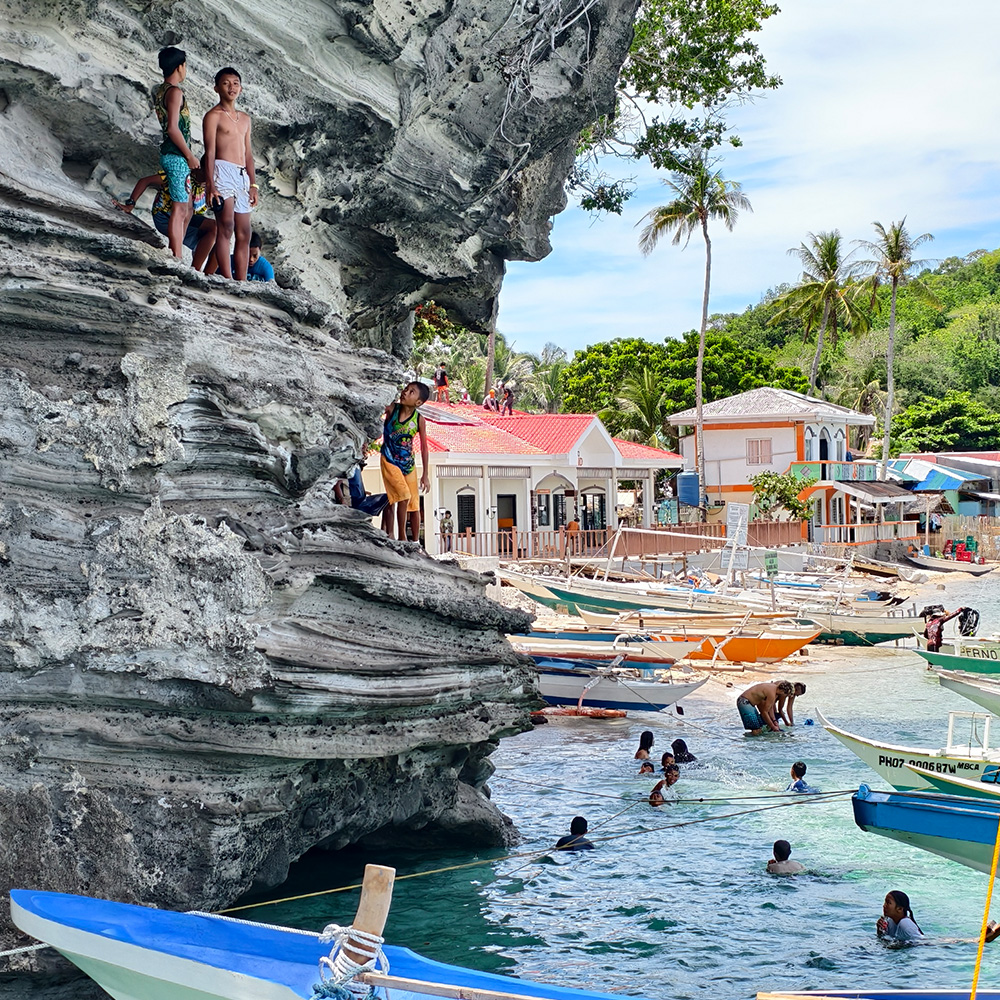
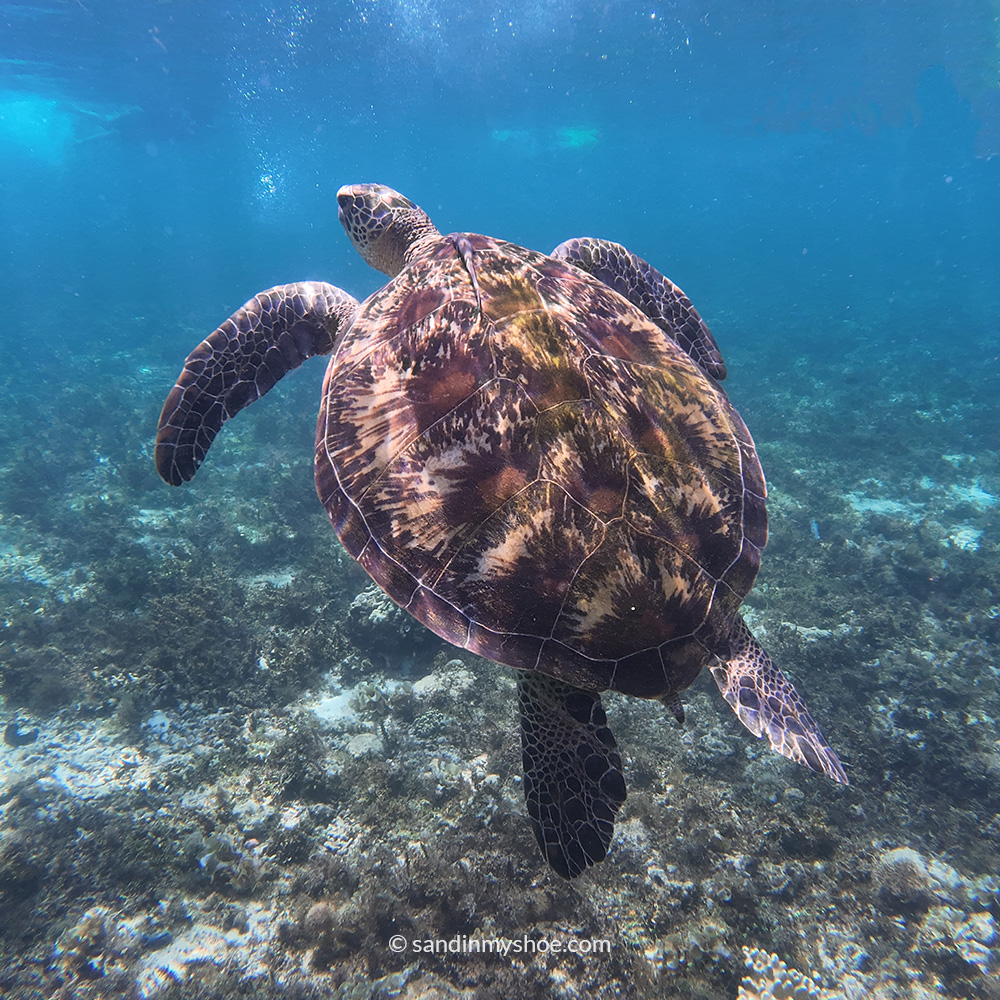
The beach is sandy and dotted with colorful boats, with turquoise water so clear you can see the coral reefs from the shore. Kids jump off cliffs into the shallow water, laughing and playing—setting the perfect laid-back tone.
Snorkeling here is unforgettable. Soon after I got in the water, a green turtle glided gracefully just a few feet away, moving effortlessly above the vibrant coral gardens full of fish in every color imaginable.
What really makes Apo Island special is how unplugged it is. There’s only one restaurant on the whole island—where familiar faces gather regularly, and the menu is simple but satisfying, with fresh fish and a cold beer. Electricity is limited to just a few hours a day, and there’s no internet, so the focus is entirely on enjoying nature and slowing your pace.
If you’re looking for a place to unwind for a couple of days, dive or snorkel to your heart’s content, Apo Island is a perfect escape.
Getting there is easy: catch a bus from Dumaguete to Malatapay Port (about 30–45 minutes), then hop on a 30-minute boat to the island. You can also come from Bohol, but the trip from Malatapay is usually cheaper.
Pros: Great snorkling, peaceful island vibe
Cons: Limited power, no wifi.
Sigirya
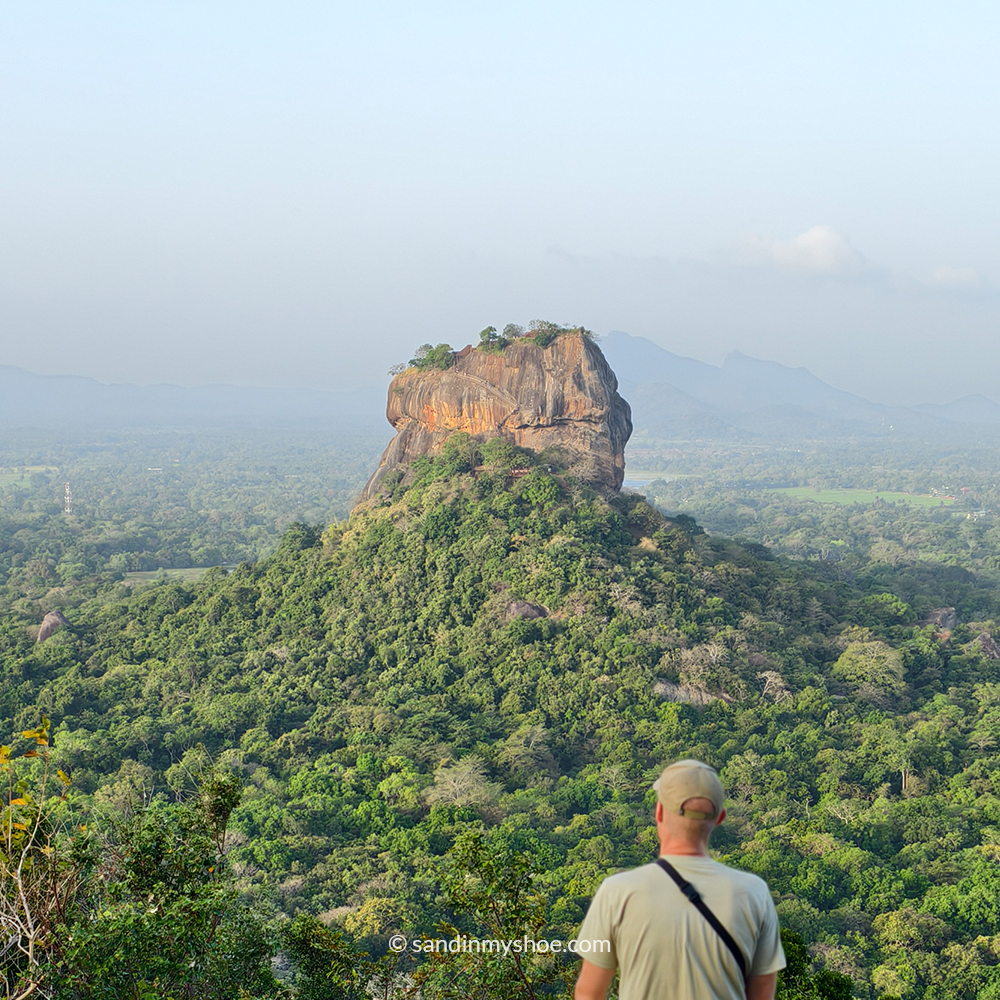
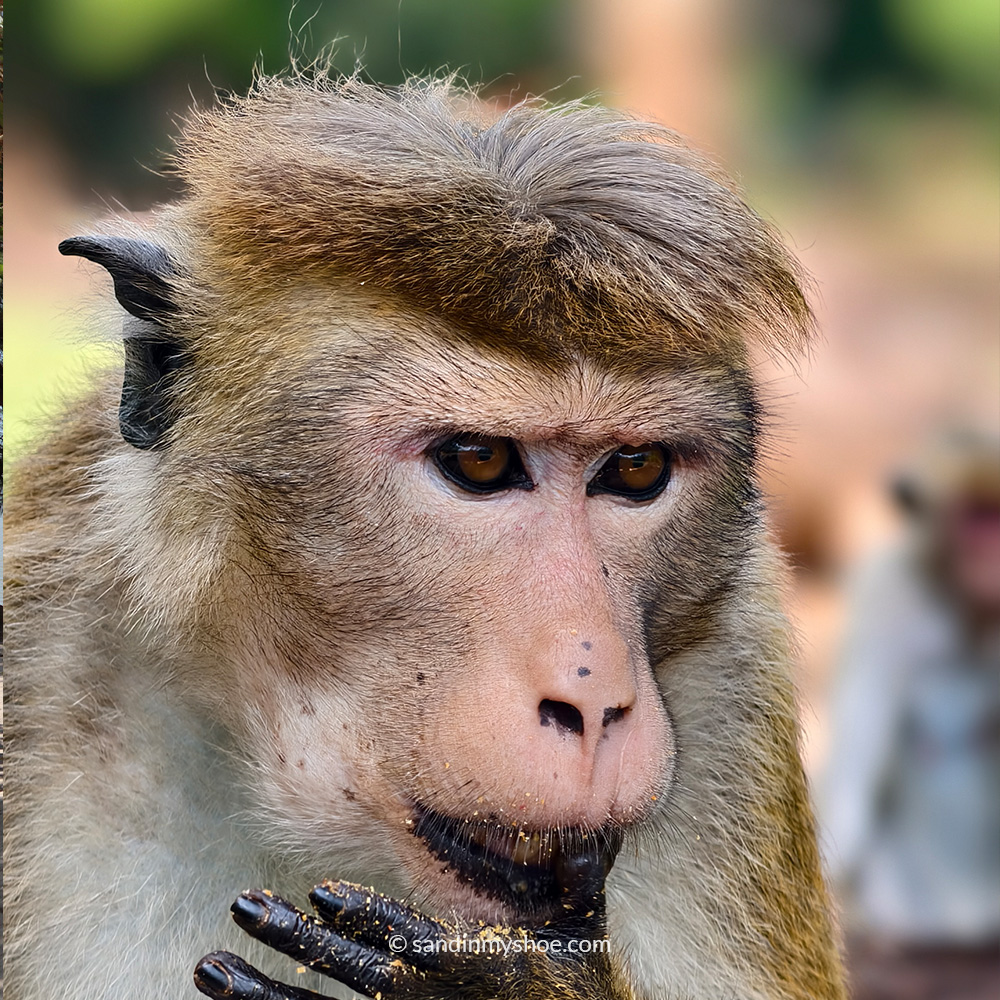
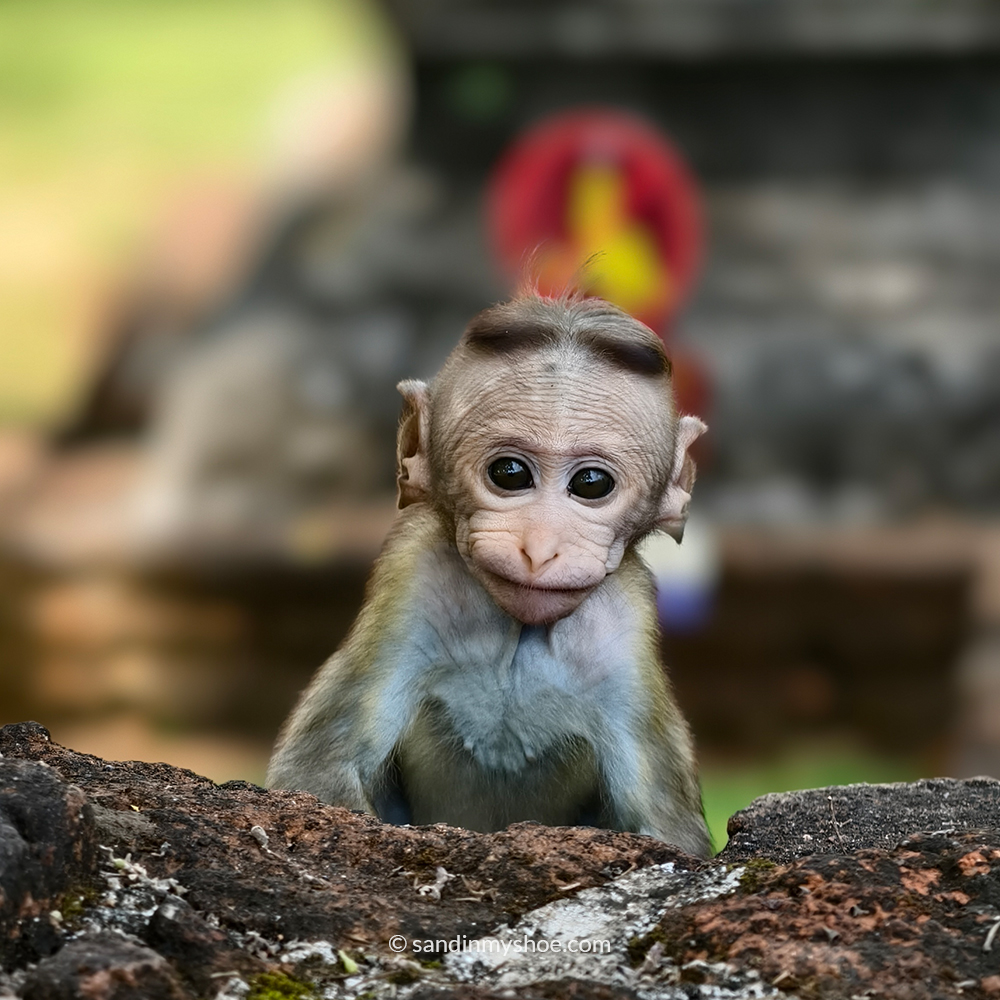
Lions Rock in Sigiriya, is one of Sri Lanka’s most iconic landmarks. This towering 200-meter-high fortress rises dramatically from the surrounding jungle and dates back to the 5th century AD. Built as a royal palace and stronghold, the hike up takes you past ancient frescoes, landscaped gardens, and winding staircases carved into the rock—with sweeping views waiting at the summit.
The area isn’t just about history. It’s also rich in wildlife. Monkeys abound at the Lion’s foot—both menacing and cute-looking. Beyond them, I once encountered a wild elephant munching on a tree by the roadside after dark while driving a tuk-tuk. It was a calm, surreal moment—but also a stark reminder of how powerful these animals are. Elephants can be dangerous, especially at night, so exercise caution if you’re driving in the area.
Aside from Sigiriya Rock, the surrounding landscape is beautiful to explore, with quiet roads, rural villages, and a raw, untamed feel. If you’re lucky, you might spot more wildlife—just keep your distance and stay alert.
Pros: Iconic historical site, epic views, chance to see wildlife, scenic and peaceful surroundings.
Cons: Pricey entry for Lions Rock, hot and crowded, tough climb, potential danger from wild elephants at night.
These Were My Favorites—What Are Yours?
These are some of the places that left a lasting mark on me—but everyone’s journey is different. Did I miss any of your favorite Southeast Asia places to go? Share them in the comments—I’m always on the lookout for new destinations to explore.

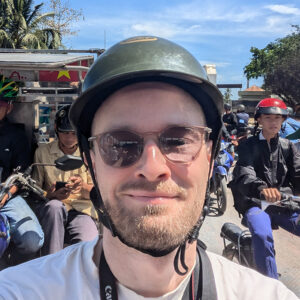
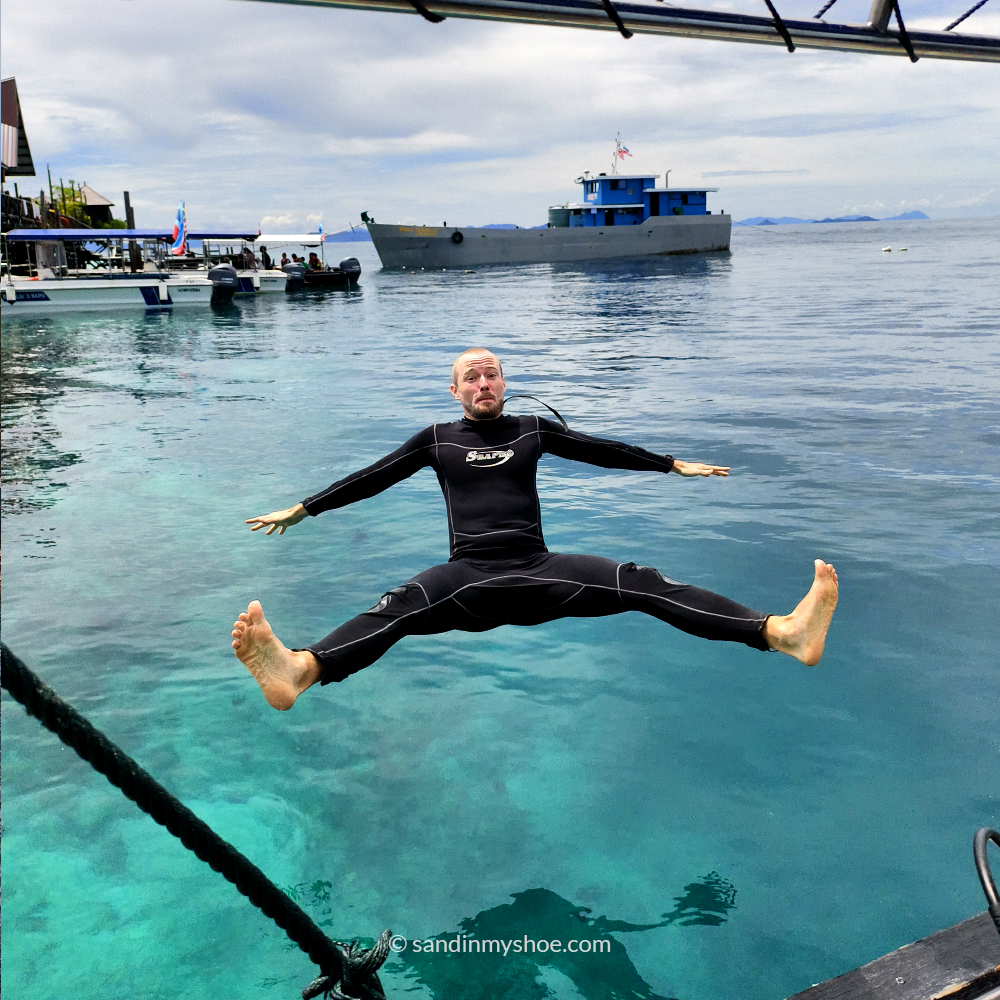
No comments yet, be the first one!
I appreciate hearing from you. If you have any suggestions, questions, or feedback, please leave a comment below. Your input helps ensure the information stays relevant and up to date for everyone.
Thank you for sharing your thoughts!